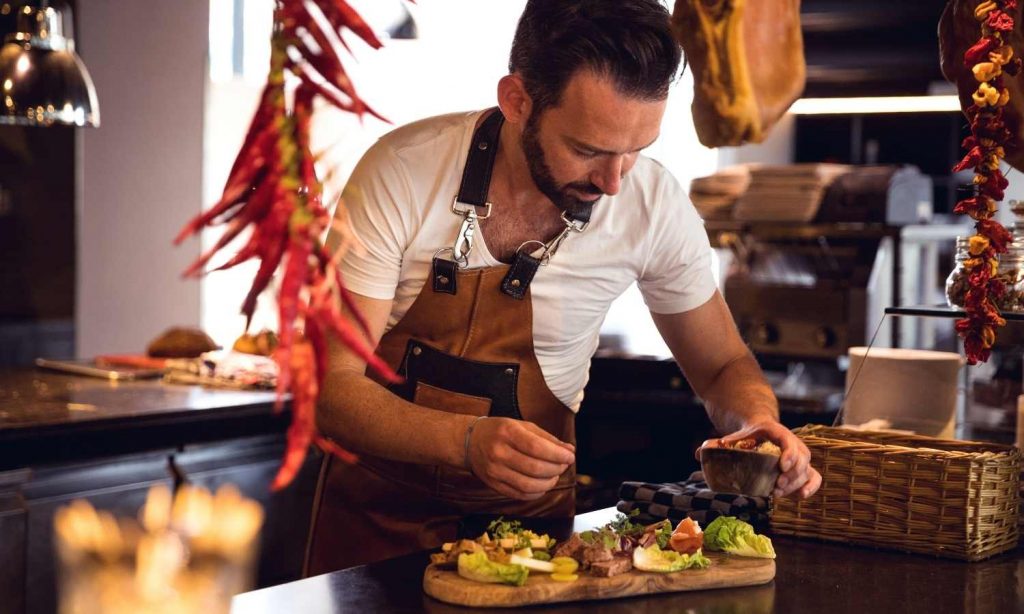The Latch has partnered with Suncorp Bank to deliver the sustainability content you need when planning your next trip.
The thought of sustainable travel draws us into far-off exotic places, where you might dream of a South American voyage on the deluxe Hiram Bingham train from Cusco to Machu Pichu, or hiding out in a rustic nature retreat amongst rice terraces in Nothern Vietnam, Sapa.
While these lush and lavish ideas may positively impact the travel community and the environment, they’re not the only way to travel sustainably. In fact, sustainable travel can be broken up into pre, during, and post journey in wallet-friendly ways that helps you to care for the planet and your finances too.
Pre-Travel
Have flexible annual leave days? When booking a ticket to an international destination, try to book during off-peak seasons. The tickets are usually cheaper, and the destination will be far less crowded, which will mean more options for you to stay, eat and play in the country of choice. Visiting outside of the packed seasons will give you access to see a city the way locals do — in spring, as the flowers are just coming to bloom, or in autumn as the trees dress in yellow.

When deciding where to go, try to avoid jumping on the next ‘Instagram trend’ bandwagon, where photographs have been neatly curated and polished to make any destination look perfect, and not real and alive. These places usually are also gated with ‘special prices’ that may not have been present before the trending photo. Although social media platforms are fantastic for sharing and browsing, they don’t always represent the reality and the heartbeat of a destination.
60% of Australians also ask close friends and family about their last travels, which is an effective word of mouth channel for best recommendations and tips that could save you some extra dollars.
During Travel
Skip the queues, throng of crowds, and sometimes expensive public transport commute. Get to know a city on foot. Walk everywhere and make acquaintances with doors, street names, plazas, and neighbourhoods. This way you could reduce your carbon footprint and become more intimate with the ways of a new city you’re visiting.
When you’re in need of a little nibble, take a walk to a local market, or street-side stall to find some local artisanal products like yogurt, chocolate, or chips. Have you heard of Kelewele? It’s a popular Ghanaian snack made of fried plantains seasoned with spices that are sold at supermarkets. If you’re still unsure of what to eat, observe what locals are putting in the grocery bag or look for ‘made in’ logos that would point you in the direction of locally sourced and produced items that have a lower carbon footprint and contribute to the local economy.

If you find yourself a little hungrier, skip going to restaurant chains or big scale restaurants where the menus are fixed and prices are inflexible. Look out for restaurants that have locals streaming in at lunchtime, menus of the day, or for a sight of people cooking in the kitchen as the orders come in. This is where the produce is bought locally and recipes are being carried on from the last generation to the next.
For example, in Singapore, hawker food is a UNESCO World Intangible Cultural Heritage. Dishes found in this open-aired food hall are an amalgamation of different ethnic groups in the country. Ingredients like rice and egg noodles that are typically seen as ‘Chinese’ were introduced to the local Malays living in the archipelago in the 1950s. These staples are now found in many Singaporean Malay dishes like ‘Mee Hongkong’ or ‘Mee Goreng. The food you eat and appreciate on a trip is just one way of preserving national heritage.
Apart from food, when visiting UNESCO world heritage sites, take time to find out from the customer service centres if you could contribute to any initiative or charity linked to the development and upkeep of these places, which are also usually homes to wildlife and local flora and fauna.

Even though using online travel platforms is easy and fuss-free, sometimes the profits end up staying outside of the destination. If you have more time, walk around the city centre looking for local guides or businesses you could book with directly so that the local businesses can earn from your dollar without having to pay an intermediary.
Most of us feel comfortable and safe in renowned five-star luxury chain hotels that come with a buffet breakfast, swanky pool, and other luxuries. However, you could also stay opt to spend some nights at local bed and breakfasts. In Spain, 100-year-old castles known as Paradores have been converted into beautifully immaculate home-stays while only using renewable energy to power the property. Staying at local accommodation will show you a side of the destination that may have been otherwise ‘refurbished’ by external contractors and developers.
Lastly, sightseeing doesn’t only happen at ticketed monuments. Spend some time sightseeing not just places, but people. How do locals greet each other? Do they hug, bow, raise their eyebrows in a way, or tut when saying no? People watching is a great way of observing and appreciating local mannerisms. Some of these behaviours may be innocuous but goes a great way in showcasing the values and unsaid customs of a place.
For example, in Japan, commuters are encouraged not to speak on the train — to one another, on the phone, or even have the phone on loud mode. This might seem counterintuitive on any local transport in Australia or in Europe, but this appreciation for silence and peace is exemplified in the Japanese culture known as Chinmoku.
Post-Travel
As you draw to the end of your trip, you may be thinking of getting mass-produced souvenirs like magnets, key chains, or little collectibles for your friends to share the joys of your travels.
However, these little tokens usually end up collecting dust or staying in one place without bringing much joy to the person after they’re received it. Additionally, these items rarely showcase the craftsmanship or the intricate cultures that you may have witnessed yourself.

Instead of accumulating these identically made souvenirs, think about getting long-lasting and tasteful gifts for yourself and your mates. Maybe a bar of chocolate made by an artisan with some flavours of marcuaya? Or maybe make a frame at a local frame shop for one of the photographs you had taken from your trip of a scene you enjoyed.
This would make your gifts more personalised and thoughtful, inevitably making them mindful of the environment.
Next time you travel, remember that being sustainable doesn’t only come from complicated, over-the-top, exclusive decisions while you’re travelling. They also come from conscious choices you make before, during, and after your trip that make your trip memorable and also leave a positive environmental and social impact on the destination you visited.
Read more stories from The Latch and subscribe to our email newsletter.







